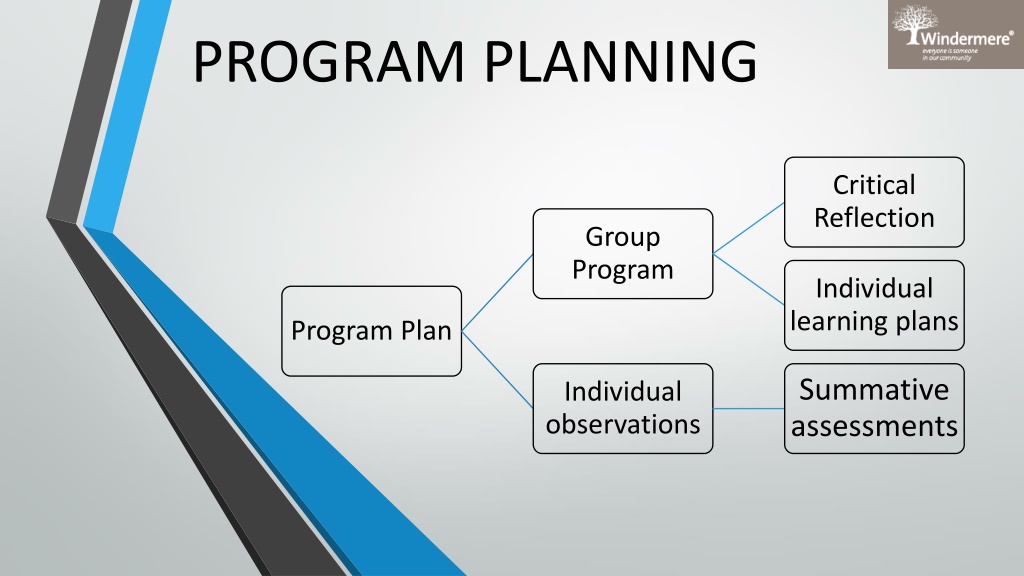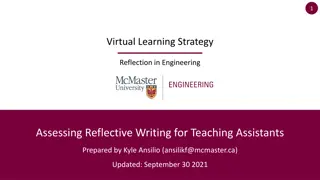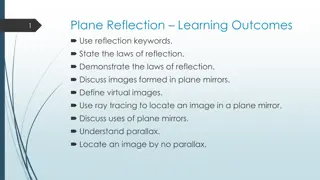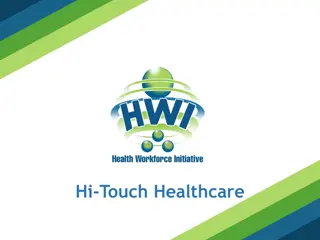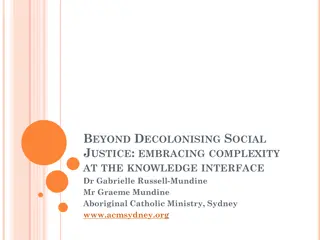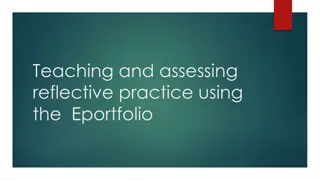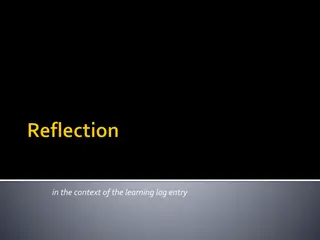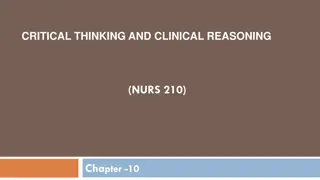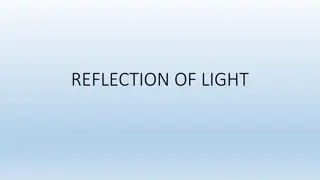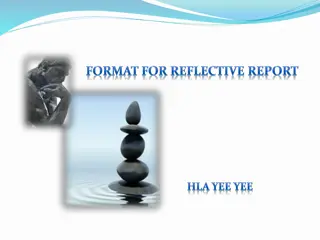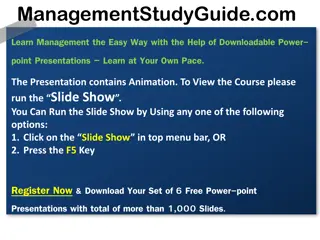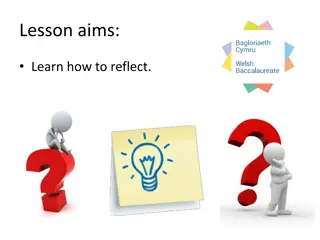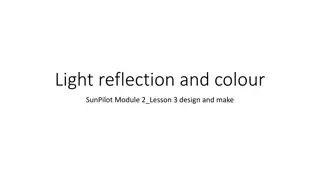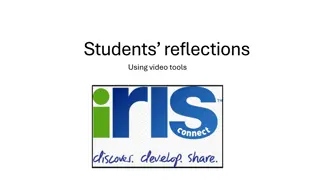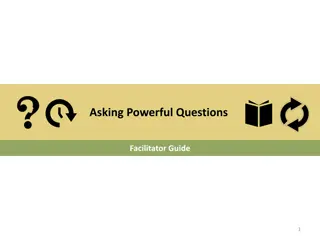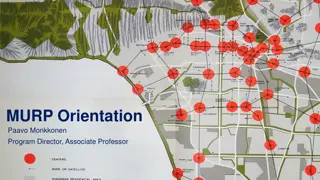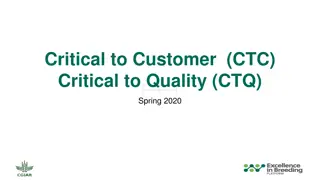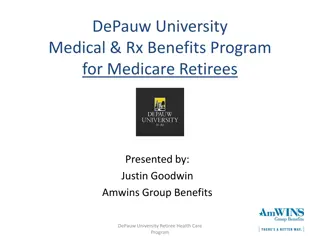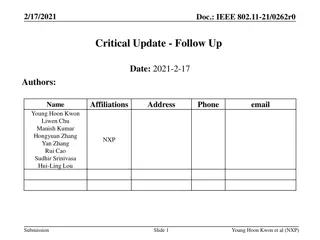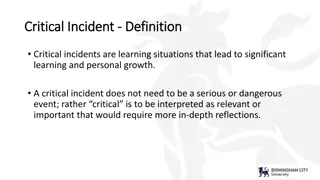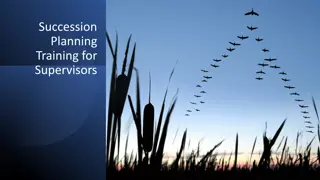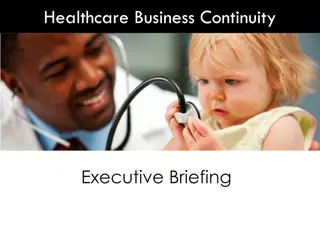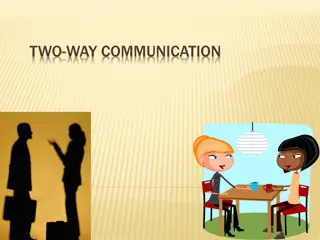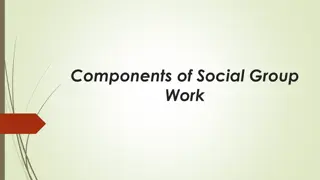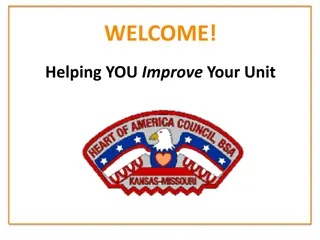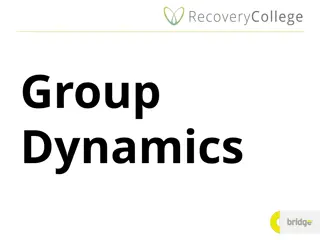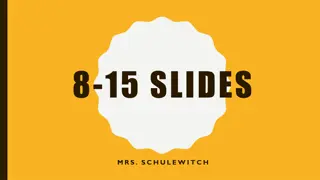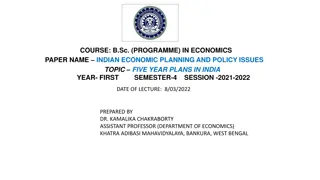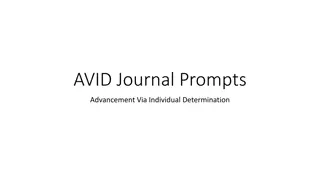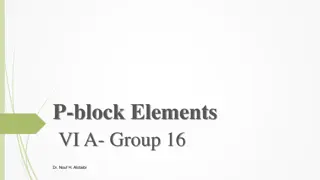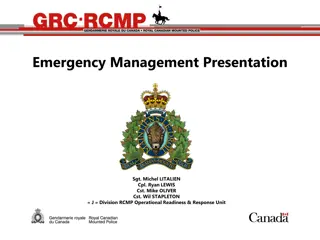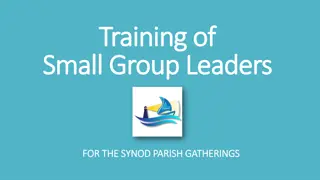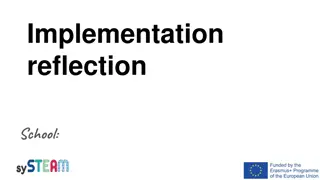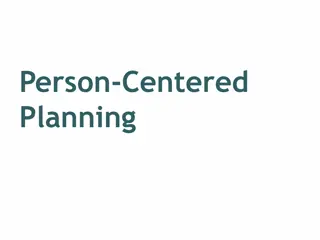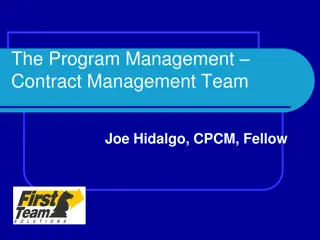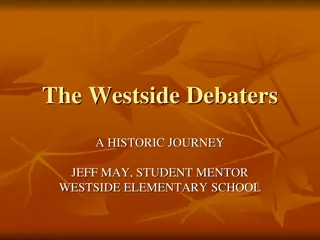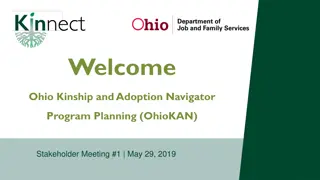Understanding Group Program Planning and Critical Reflection
Group Program Planning involves creating interconnected learning plans for individuals within a group setting by observing and reflecting on experiences. Critical reflection helps identify learning moments, milestones, and emerging interests to enhance future program design. The process includes evaluating what worked well, skills demonstrated, parental communication, and future planning based on observed outcomes.
Download Presentation

Please find below an Image/Link to download the presentation.
The content on the website is provided AS IS for your information and personal use only. It may not be sold, licensed, or shared on other websites without obtaining consent from the author. Download presentation by click this link. If you encounter any issues during the download, it is possible that the publisher has removed the file from their server.
E N D
Presentation Transcript
PROGRAM PLANNING Critical Reflection Group Program Individual learning plans Program Plan Summative assessments Individual observations
Group Program and individual observations are interconnected. Group Program and individual observations are linked. Individual drawn from the experiences provided in group program. observations are Group Program Individual observations Critical reflection of the group program enables to locate learningmoments which can be converted into learning stories.
Group Program Group Program can have one or combination of focus points from the diagram below Focus areas Important and current events Group Plan Focus skills Learning goals
Group Program Group Program is one program for all children. Group Program is ever evolving throughout the period it is designed for. Group program includes educator led, spontaneous and child initiated experiences. Those can be marked in the plan with abbreviations such as (EL, SP and CI) Any learning moment or individual milestones achieved which is observed during the experiences can be marked in the plan with child s initials. That learning moment can then be converted into individual observation or can be combined together with similar milestones to make up a learning story. Focus areas- examples- Wellbeing, Independence, Confidence, Communication, Literacy, resilience, cultural awareness etc (connected to EYLF learning outcomes). Focus skills- examples- Physical (gross and fine motor), Social and emotional skills, sensory, hand eye coordination, problem solving skills, social skills, creative and imaginative skills etc Learning goals- examples- developmental milestones such as holding a pencil, hand grip, rolling a ball, catching and throwing, able to say words and sentences, can dress and undress on their own, can eat by themselves, can read and write etc Important events and current affairs- examples- including important events and designing experiences with focus on those events to promote skills. Events such as Olympics, NAIDOC week, Christmas, Anzac day, world environment day, child protection week etc
Group Program- critical reflections Critical reflections of the group program are to be done at the end of the period the plan is designed for. For a monthly program, a critical evaluation is to be documented at the end of the month. Critical reflection is generally sub categorized in 4 parts- What worked well during the month? Can it be converted into an observation for a particular child? Is a particular milestone achieved, if yes, is it communicated to parent? What are the skills demonstrated? What did not work well during the month?- can it be added to individual learning plans to be repeated or modified for a better result? What are the emerging interests observed during the period?- Can it be added to individual learning plans for exploration? Are the parents informed about the emerging interests? What is the future plan?- Are the emerging interests included in the next plan for further exploration? Are some of the experiences from previous period modified to review if working well? Are any of the individual learning plans synched to the future plans?
Group Program- Individual learning plans Individual learning plan would enable educators to evaluate child s learning to assess the development. Structured reflection would lead to a positive change and growth.
Individual observations Structured reflection of the group program would give educators a chance to assess child s learning and development. The sub part of what worked well during the period could lead to locating a developmental milestones achieved or improvement observed or notice an emerging interest. That lead could then be converted into an individual observation. Observation needs to be connected to the group plan reflections. Educators can do jottings as well as keep a diary to note learningmoments . Two or three learning moments can be combined together to write a learning story. Observations can be learning story, running record, photo observations, work samples documented etc. Children s individual portfolios should have a mix of styles if possible. Individual observations can be collated into summativeassessments at the end of the year for an overview of whole year s development. Summative assessments would enable educators to assess, design and set learning goals for each child for next year.
Individual observations Observations have 3 sub parts- Observation- actual details are recorded of what is been seen, heard, talked and happened. Any conversations that happened are documented here. Interpretation-Educator s analysis of what the child is learning, assessing the development, the skills demonstrated and connection to EYLF outcomes and practices. Future plan- Based on the current observation and educator s analysis what could be offered next to the child to extend the learning. This should be assessed during the next group plan.
